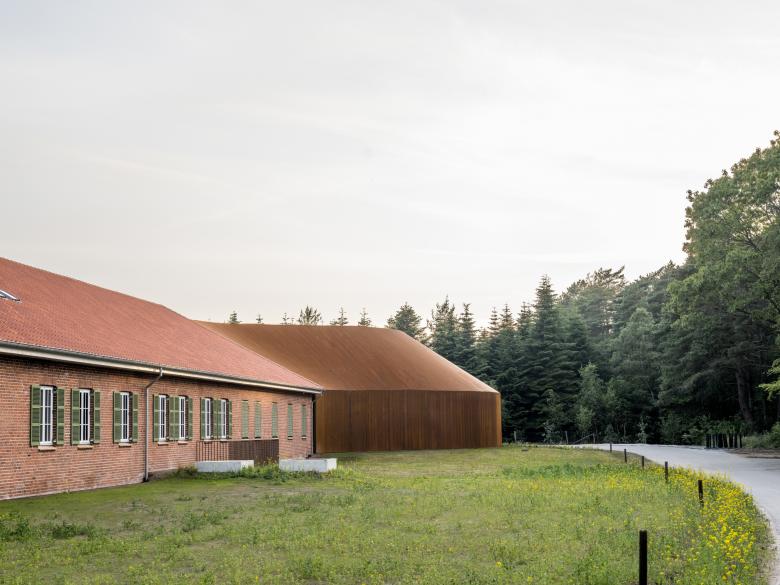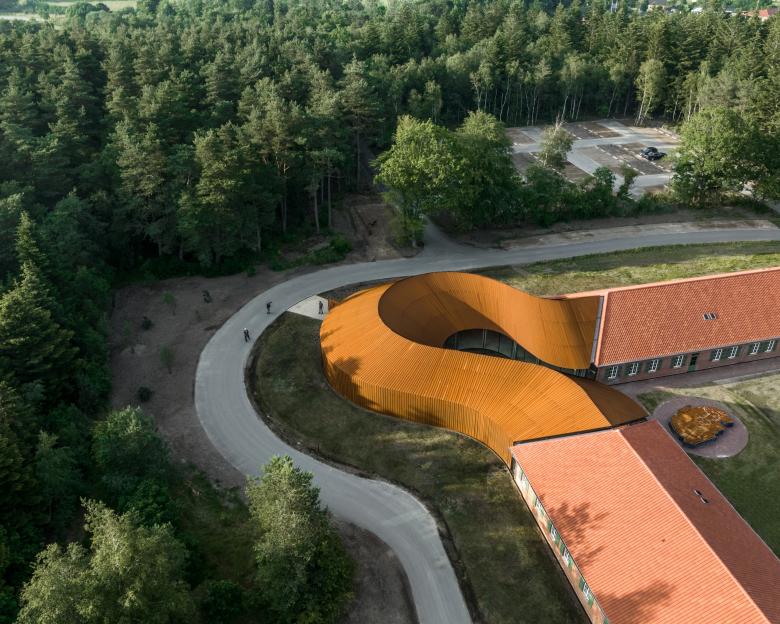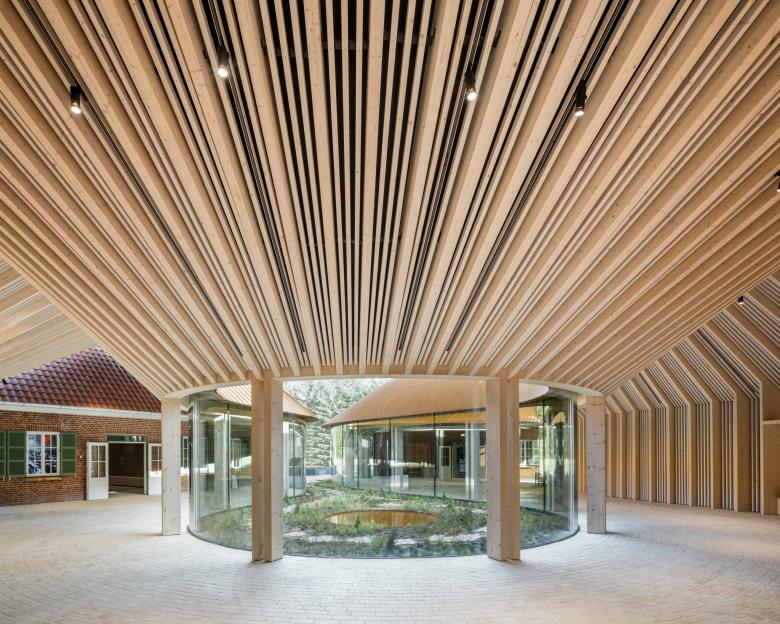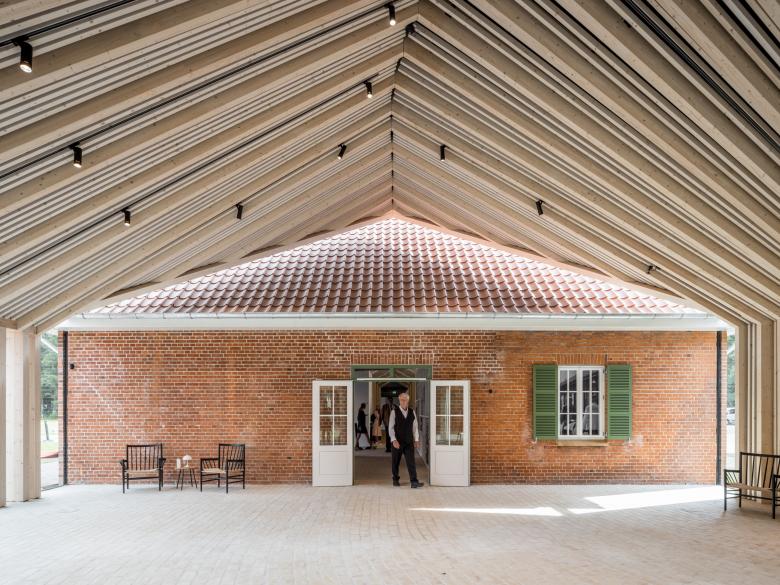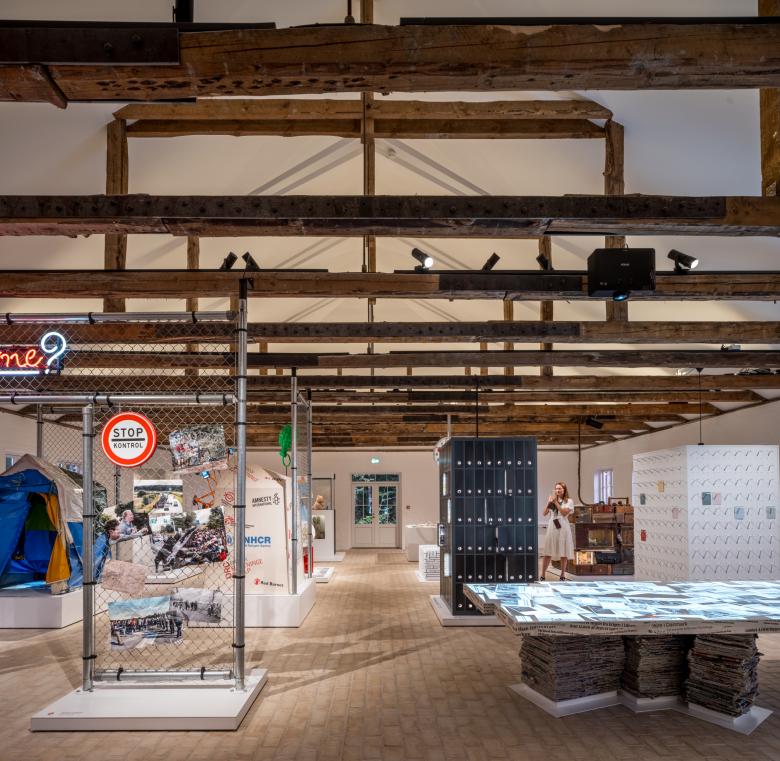Refugee Museum of Denmark Opens
John Hill
29. June 2022
Photo: Rasmus Hjortshøj
FLUGT – Refugee Museum of Denmark, an international museum designed by BIG – Bjarke Ingels Group that is devoted to stories about refugees, was inaugurated on June 25 by Denmark’s Queen Margrethe II.
FLUGT is located in Oksbøl, at the site of Denmark’s largest World War II Refugee camp. Referencing this location, museum director Claus Kjeld Jensen said the aim of FLUGT is "to tell the story of the largest stream of refugees that Denmark has ever received – a story unknown to many people." At its largest the camp held 35,000 refugees during the war. "But," Jensen said, "the museum also tells the story of the countless refugees who have arrived in Denmark in recent years," from places like Vietnam, Hungary, Afghanistan, Syria, and Ukraine.
Photo: Rasmus Hjortshøj
FLUGT is the second museum designed by BIG for Vardemuseerne, which oversees museums in the Varde municipality in Jutland, the westernmost region of Denmark; five years ago TIRPITZ opened in Blåvand. Just as the earlier project transformed and expanded a historic German WWII bunker into a cultural venue, BIG adapted and extended a hospital building at the camp in Oksbøl, turning it into the 1,600-m2 FLUGT museum. And just as BIG worked with exhibition designers Tinker Imagineers at TIRPITZ, the two studios reunited on FLUGT, with the design of the latter aiming to "make the huge numbers and statistics relevant by telling stories about individuals," per the museum.
Photo: Rasmus Hjortshøj
Visitors enter FLUGT through a new curved volume that connects the two perpendicular rectangular footprints of the former hospital. The curved addition is covered in Corten steel on the roof and on its exterior facade; inside, the new volume is framed in 110 wood rafters and a glass wall — an antithesis of the closed-off Corten surfaces — that "reveals a view of a sheltered green courtyard and the forest, where the refugee camp used to be," per BIG, whose landscape studio designed the courtyard. The snaking lobby space serves to welcome visitors and lead them to and from the north and south museum wings, but it could also be used as a temporary exhibition space. The north wing contains exhibition space that, though primarily open, does preserve some of the few intact interior walls from the hospital. The south wing has a few smaller exhibition spaces as well as a conference room, cafe, and back of house functions.
Photo: Rasmus Hjortshøj
Vardemuseerne is expecting 100,000 people to visit the museum every year. Previously, up to 20,000 people from Germany alone would visit the refugee cemetery in Oksbøl. In turn, the museum was paid for in part by funds from the German State and the federal state of Schleswig-Holstein.. According to Vardemuseerne, the museum collaborates with a few German organizations, including the Stiftung Flucht Vertreibung Versöhnung (SFVV) in Berlin, Volksbund Deutsche Kriegsgräberfürsorge in Kassel, the German Embassy in Copenhagen, and the Danish Embassy in Berlin, amounting to "a joint processing of the aftermath of the war."
Photo: Rasmus Hjortshøj
Related articles
-
Refugee Museum of Denmark Opens
on 6/29/22
-
Marsk Tower
on 8/11/21
-
NOMA 2.0
on 9/20/18
-
LEGO House
on 10/3/17
-
LEGO House Fever
on 8/29/17
